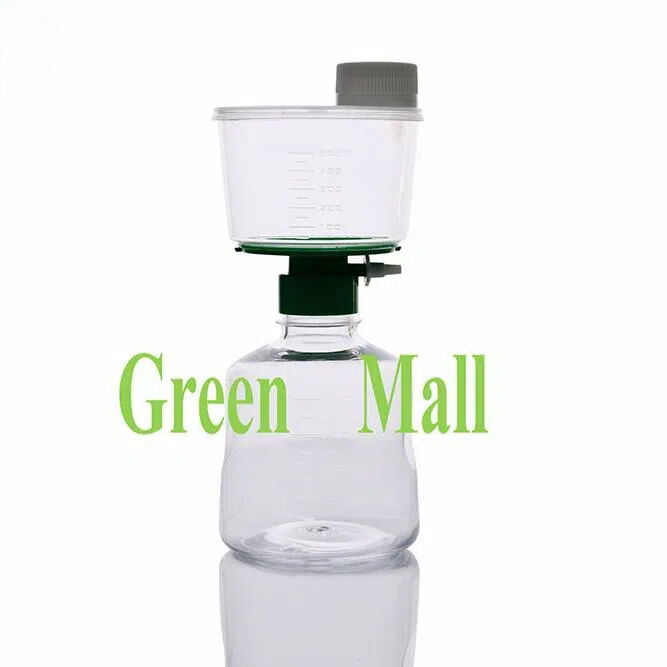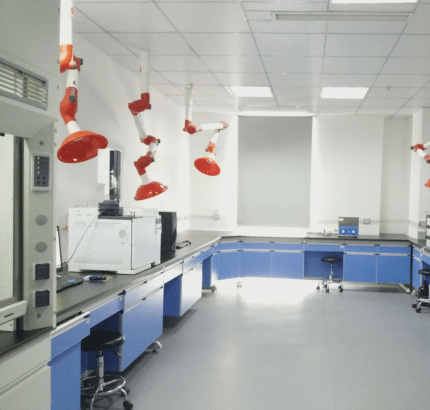Streamlining Laboratory Filtration for Accuracy and Safety
In laboratory workflows where clarity and sterility are paramount, filtration plays a crucial role. Whether preparing media for cell culture, sterilizing buffers, or removing particulates from chemical solutions, having a dependable method for liquid filtration is essential. Among the array of options available, the bottle top filter stands out as a highly reliable and convenient tool for achieving clean, sterile results with minimal effort.
Designed to screw onto standard laboratory bottles, a bottle top filter offers quick and effective filtration using vacuum or gravity. Its design minimizes contamination risks and reduces the complexity of traditional filtration setups. By incorporating advanced membrane technologies and ergonomic features, the bottle top filter supports laboratories in maintaining productivity, consistency, and sample integrity.
Understanding the Functionality of Bottle Top Filters
What Is a Bottle Top Filter?
A bottle top filter is a device used in laboratories to sterilize or clarify liquids by attaching directly to a receiving bottle. It typically includes a plastic funnel with an integrated membrane, which filters the liquid into the bottle below through vacuum suction or gravitational flow. The membrane material and pore size determine what substances are retained or passed through.
These filters are widely used in microbiology, molecular biology, analytical chemistry, and pharmaceutical labs. Their ease of use and sterile design make them indispensable for sample purification, especially when working with sensitive biological samples or formulations that must remain contamination-free.
Main Components and Their Roles
A typical bottle top filter consists of three key components: a funnel or reservoir, a filtration membrane, and a connection interface that fits securely on top of a lab bottle. Some designs also include pre-filters or splash guards to improve flow rates and prevent backflow during filtration.
The filtration membrane is the core of the system, available in various materials like PES, cellulose acetate, or PTFE. These membranes offer different levels of chemical compatibility and flow performance. The quality and construction of the membrane and housing are crucial to ensuring reliable results in laboratory operations.
Choosing the Right Membrane for Your Application
Membrane Types and Chemical Compatibility
Selecting the appropriate membrane material is essential when choosing a bottle top filter. The most common types include polyethersulfone (PES), cellulose acetate (CA), nylon, and PTFE. Each type has unique chemical resistance properties and is suited to specific types of solutions.
PES membranes are ideal for cell culture media due to their low protein binding and high flow rate. Nylon membranes are chemically robust and can handle alcohols and most aqueous solutions. PTFE membranes, being hydrophobic, are best suited for filtering aggressive solvents or gases. Selecting the wrong membrane can compromise filtration quality and affect downstream applications.
Importance of Low Protein Binding
In biological applications, minimizing the loss of valuable molecules such as proteins, enzymes, or antibodies is critical. Membranes with low protein binding—such as PES or CA—are preferred for these uses. They help preserve sample integrity and ensure accurate analysis, especially when working with expensive reagents or sensitive formulations.
Using high-binding membranes in these cases can lead to lower recovery rates, inaccurate results, and increased costs. Understanding your sample composition and the filter’s interaction with it ensures optimal performance and efficiency.

Matching Pore Size with Filtration Needs
When to Use 0.22 μm vs 0.45 μm Filters
The pore size of a bottle top filter defines the size of particles or microorganisms it can retain. For sterilizing solutions, a 0.22 μm filter is standard because it effectively removes bacteria and most contaminants. For less stringent applications, such as particle removal or clarification, a 0.45 μm filter may be sufficient and can offer faster flow rates.
Choosing the correct pore size ensures that the filtration process aligns with your sterility or purity requirements. Using too fine a filter can slow down processing time unnecessarily, while too coarse a filter may compromise sample cleanliness.
Balancing Speed and Sterility
One of the most frequent considerations in lab filtration is balancing the need for sterility with the desire for a fast workflow. While smaller pore sizes improve sterility, they can reduce throughput. Laboratories often need to filter large volumes quickly—so optimizing pore size and membrane area can help maintain efficiency without compromising safety.
Modern bottle top filters are designed to strike this balance with optimized membrane surfaces, ensuring high flow rates even with 0.22 μm filters. This enables laboratories to meet high throughput demands without sacrificing quality.
Application Versatility Across Research Fields
Cell Culture Media Preparation
Cell culture applications demand the highest level of sterility. Bottle top filters are widely used to prepare media by sterilizing all components prior to incubation. Because many culture media contain heat-sensitive components like antibiotics or hormones, filtration is preferred over autoclaving.
Using a bottle top filter ensures that these solutions remain uncontaminated, maintaining the viability of cell cultures and preventing costly experimental failures. The process is fast, clean, and compatible with sterile bottles for long-term storage.
Analytical and Chemical Solution Filtration
In analytical chemistry and chromatography workflows, removing particulates from solutions is essential to protect instruments and maintain analytical accuracy. Bottle top filters with 0.45 μm membranes are commonly used for sample clarification, helping to reduce noise in UV detection and improve reproducibility.
For solvents and reagent mixtures, membrane compatibility is critical. Nylon and PTFE membranes offer excellent resistance to organic solvents, acids, and bases, allowing for reliable filtration without degrading membrane integrity.
Enhancing Workflow Efficiency and Safety
Simplifying Setup and Reducing Contamination Risk
Unlike traditional vacuum flask filtration setups, which require glassware, adapters, and tubing, a bottle top filter provides a compact and self-contained solution. This not only simplifies the setup process but also minimizes the risk of contamination by reducing handling steps.
Bottle top filters are often individually wrapped and sterilized, ready for immediate use. This convenience improves workflow efficiency in busy laboratories and reduces operator error.
Improving Ergonomics and User Experience
Many modern bottle top filters are designed with ergonomics in mind. Features such as wide mouths for easier pouring, secure bottle threading, and splash guards reduce the chance of spills and improve the user experience. Some filters also have graduated funnels to help measure volume during filtration.
By making the filtration process easier and safer, these ergonomic features contribute to higher productivity and less fatigue among lab personnel, particularly during repetitive tasks or large-batch filtrations.
Factors to Consider When Selecting a Bottle Top Filter
Bottle Compatibility and Volume Requirements
Not all bottle top filters are universally compatible. Most are designed to fit bottles with GL45 thread sizes, but laboratories should always confirm thread compatibility before use. Some filters come with adapters to ensure a snug fit with different bottle types.
Additionally, consider the volume capacity of the funnel. Larger volumes may require bottle top filters with wider diameters or higher funnel capacities to reduce refill times and optimize workflow efficiency.
Sterility and Packaging Options
Sterile filtration is only effective if the filtration device itself is sterile. Reputable manufacturers provide bottle top filters that are pre-sterilized and individually packaged to maintain cleanliness until use. Sterile packaging also helps laboratories meet compliance standards for regulated workflows.
Look for filters that are certified with sterility assurance levels (SAL) appropriate to your application. Non-sterile options may be used in general-purpose filtration but are not suitable for critical biological or clinical settings.
Environmental Impact and Cost-Efficiency
Reducing Plastic Waste and Solvent Use
While bottle top filters are often single-use, selecting models with recyclable components can reduce environmental impact. Some manufacturers offer filters made from recyclable plastics or designed to minimize material use without sacrificing performance.
In addition, using a bottle top filter can reduce overall solvent usage by enabling cleaner separations with fewer wash steps. Cleaner filtrates reduce the need for additional purification, thereby lowering the overall chemical footprint.
Balancing Cost and Performance
Choosing the most affordable bottle top filter may seem like a budget-friendly decision, but lower-cost options can compromise flow rates, membrane integrity, or sterility. On the other hand, premium filters often provide superior throughput, lower protein binding, and more consistent results—leading to cost savings through improved efficiency and reduced sample loss.
Laboratories should evaluate total cost of ownership, factoring in both product cost and downstream impacts such as repeat work or equipment maintenance due to poor filtration.
Adapting to Advanced Laboratory Needs
Automation Compatibility and High-Throughput Filtration
In high-throughput labs, the need for automation is growing. Bottle top filters with consistent dimensions and performance are better suited for integration with semi-automated systems. Uniformity in flow rate and fit ensures compatibility with robotic liquid handlers and vacuum manifolds.
Some models are specifically designed for high-throughput workflows, with reinforced housings and faster flow rates. These filters support screening labs, QC departments, and contract research organizations in maintaining efficiency without compromising precision.
Supporting Specialized Applications
Beyond standard lab uses, bottle top filters also support niche applications such as virus filtration, endotoxin removal, and nanoparticle isolation. Specialized membranes and pre-filters can be included to capture ultrafine particles or biological contaminants, extending the utility of bottle top filters to advanced biotechnology and clinical diagnostics.
These specialized filters are validated for specific retention capabilities, allowing researchers to address complex purification needs while maintaining sterility and performance.
FAQ
What is a bottle top filter used for?
A bottle top filter is used to sterilize or clarify laboratory liquids by filtering them directly into a receiving bottle. It simplifies the filtration process while reducing contamination risks, making it ideal for applications like cell culture media preparation, buffer sterilization, and analytical sample clarification.
How do I choose the right bottle top filter for my lab?
Consider your application, required pore size, membrane compatibility, and volume capacity. For sterile filtration, use 0.22 μm PES or CA membranes. For chemical resistance, opt for PTFE or nylon membranes. Ensure bottle thread compatibility and verify if sterile packaging is necessary.
Can bottle top filters be reused?
Most bottle top filters are designed for single use to ensure sterility and consistent performance. Reuse is generally not recommended, especially in critical applications like cell culture or clinical diagnostics, due to the risk of contamination and reduced filter integrity.
Are bottle top filters environmentally friendly?
While typically disposable, some bottle top filters are made from recyclable plastics or designed to reduce waste. Selecting filters that minimize solvent use and have low environmental impact can help laboratories meet sustainability goals.
Table of Contents
- Streamlining Laboratory Filtration for Accuracy and Safety
- Understanding the Functionality of Bottle Top Filters
- Choosing the Right Membrane for Your Application
- Matching Pore Size with Filtration Needs
- Application Versatility Across Research Fields
- Enhancing Workflow Efficiency and Safety
- Factors to Consider When Selecting a Bottle Top Filter
- Environmental Impact and Cost-Efficiency
- Adapting to Advanced Laboratory Needs
- FAQ




